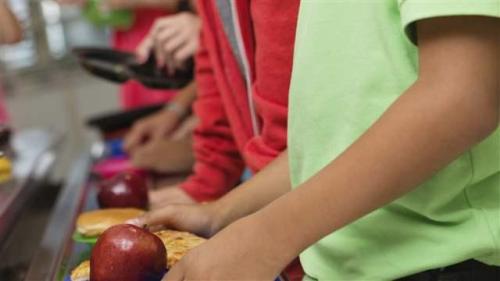Rates of children living in households characterized by food insecurity or very low food security have improved since 2014 as the economy has continued to recover from the Great Recession. But, these statistics only show us annual snapshots of food insecurity, which masks times over the course of the year in which children may become food insecure. When schools let out for summer, children from food insecure households no longer have access to school meals, and their access to food becomes more variable.
Nevertheless, in 2015, food insecurity remained unconscionably high in the world’s richest nation. Defined by the U.S. Department of Agriculture (USDA) as a state in which consistent access to adequate food is limited by a lack of money or other resources, more than 13 million children in 2015 lived in a household characterized by food insecurity—over 1 in 6 children in America. Even more troubling, in 2015 more than 6 million children were food insecure themselves and another half a million children suffered one or more periods during which their food intake was reduced and normal eating patterns were disrupted because the household lacked money and other resources for food.
Though there are children living in households characterized by food insecurity in every state, these millions of children are unevenly distributed across states. Figure 1 shows the average annual percentage of children living in food insecure households in each state from 2013-2015. In 22 states, more than 20 percent of children lived in food insecure households. In five states—Mississippi, Louisiana, Alabama, Arkansas, and Oregon—more than one in four children lives in a food-insecure household.
Figure 1: Percentage of children living in food-insecure households by state, 2013-15 average
 Below, figure 2 shows the average annual percentage of children living in households experiencing very low food security, from 2013-2015. The state averages range from a low of 3.3 percent in Iowa to a high of 9.1 percent in Oklahoma.
Below, figure 2 shows the average annual percentage of children living in households experiencing very low food security, from 2013-2015. The state averages range from a low of 3.3 percent in Iowa to a high of 9.1 percent in Oklahoma.
Figure 2: Percentage of children living in households with very low food security by state, 2013-15 average

As one might expect from an overall reduction in the number of children living in food insecure households, states have made strides in reducing food insecurity since the Great Recession as well. An interactive produced by The Hamilton Project shows that from 2008–11, in 10 states more than a quarter of children lived in food insecure households; in an additional 12 states, the rate of children living in food insecure households was between 23 and 24.99 percent. From 2013-15, in only five states—Mississippi, Louisiana, Alabama, Arkansas, and Oregon—did more than a quarter of children live in food insecure households.

The social safety net plays an important role in combatting the problem of food insecurity among children, but food insecurity rises when students lose access to school meals programs during the summer months. A recent demonstration project from the USDA found that providing low-income families a $60 per summer month benefit reduced households’ food insecurity rates by 15 percent and their rates of very low food security by one third. A subsequent demonstration project found that a smaller benefit of $30 per month had nearly equal impacts on reducing very low food security rates, albeit smaller impacts on the broader food insecurity measure. Other recent studies have found that SNAP improves children’s health outcomes, and the later-life outcomes of individuals who had access to the program as adults.







Commentary
Food insecurity among children in 2015
June 19, 2017